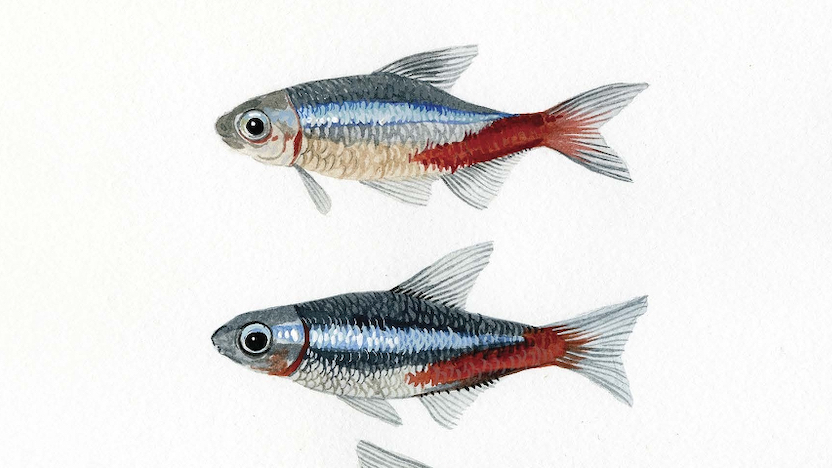Natasha Rao, the author of Latitude, is visiting the school on Friday, January 27th as a part of Northwest Academy’s visiting writer series. Latitude is a collection of poems with a broad range of topics that are all tied together through themes of family, nature and nostalgia. In the past months, the E/H 4 class has committed every English flex block to writing projects inspired by Rao’s book. Students were assigned a poem from Latitude to read and analyze, and then write a original poem in response to.
Part of the lead-up to the visiting writer series is an interview with the author herself, Natasha Rao. Getting to know a bit about the author is helpful in forming context before the Q&A section of the visiting writer event itself. Enjoy the fun and thoughtful answers from the author of Latitude!
Can you give a brief background on how you got into writing? What would you say is your source of inspiration?
I’ve been writing for as long as I can remember—in early childhood I used to fill little notebooks with poems and short stories because it was something I genuinely enjoyed doing. I started to think seriously about being a writer as a career probably toward the end of high school, after being lucky enough to have teachers who encouraged me to pursue it as a path. My source of inspiration is probably the experiences in my life—the people I meet, places I go, scenes I encounter.
Your familial relationships are a strong, recurring theme throughout Latitude. How do your familial experiences manifest in your poetry?
I’m very close with my family and they play a pivotal role in my life. As such, familial relationships are a constant source of inspiration and material for my work. There are so many joys and complexities to these relationships that anytime I’m at a loss for material, I turn to family because I feel I’ll never run out of things to say.
What was the creative process behind Latitude like? What goes into writing one of your poems?
The process wasn’t planned in advance but instead happened organically. I had been writing poems for years without really thinking about writing a book. Then during the final semester of my MFA program, it was time to compile a thesis, and I realized that I had a massive stack of poems that I could fashion into a manuscript. I then spent the year after graduating from my MFA continuing to shape the manuscript, finding threads and writing new poems where I thought some links could be made.
What goes into the choice of line breaks within your poems? How do you decide when to break a stanza, specifically in a poem like “For a Gray Page?”
I usually read the poem aloud and try to break the lines where I find there to be a natural rhythm or pause, and try to end each line on words I want to emphasize more than others. I also take into consideration the shape of the poem on the page.
Some of the most prevalent themes in Latitude include family relationships, nostalgia, as well as nature. In your mind, how do these themes intersect?
For me, these themes are all connected because family and the natural world were the most prevalent aspects of my childhood so they all feel like part of the same lush landscape.
 How would you describe your relationship with nature? Has it been the same type of connection your whole life, or has it changed over time at all?
How would you describe your relationship with nature? Has it been the same type of connection your whole life, or has it changed over time at all?
I’ve always had an affinity for nature, though I think it probably has changed over time. In my earlier years it felt like a simpler sort of connection, in that I just loved being outside in the grass, with the flowers, among the deer. As I got older a new layer of conservation and environmental stewardship was added to that delight.
In your poem “Earth Memory,” you show a fascination with goosebumps, and use imagery to describe them as “the ghosts in our skin.” What exactly brought on this connection between goosebumps and ghosts? Are the “ghosts” referring to ancestors, or something else?
That poem came after a biology lecture in which I learned that goosebumps are a vestigial structure—that they used to have some function which has been lost over time. I thought that was a fascinating notion, that even though so much time has passed we still have these remnants of a much earlier period, so you’re exactly right that I was referring to ancestors, as well as evolutionary ancestors.
Had you been collecting poems for a long time or did you write everything for Latitude within a certain period of time?
Most of the poems in Latitude were written between 2017-2020, but a few span as far back as my first year of college. “Earth Memory” was written in 2013, and the book was published in 2021, so there’s definitely quite a range.
What inspired the choice of formatting for the collection? What was the creative decision behind splitting the book into four parts?
Once I had a mass of poems, I taped them up on my bedroom wall and tried to find threads that linked certain poems together. After much deliberating and reorganizing, I felt that there were four distinct parts to the book, hence the separate sections.
How does the time you spend writing a poem vary? Does a longer poem such as “Love Letters” take substantially longer to write than a shorter poem?
It really depends—it’s less about length and more about other factors. Sometimes (though very rarely) I’ll have a burst of some sort of cosmic energy and am able to write a poem that seems to just fall onto the page and needs little to no revision. More typically though, I’ll take notes sporadically throughout my days and then carve out some time to write the poem, which entails going through notes, trying to connect different images, and then a long period of revision. Usually after I write the first draft, I put the poem away for about a week or so and then return to it with fresh eyes to revise. Some poems take longer than others to be finished—it can feel like I’m deliberating over the smallest bit of punctuation for months, but it’s extremely satisfying once it’s finally done.
Ending on a fun note, what exactly inspired the poem “In my next life let me be a tomato?”
During the height of COVID I spent a lot of time gardening, and I became really captivated with the tomatoes I was growing in my parents’ backyard. I was constantly thinking about tomatoes—growing them, cooking and eating them—and it got so intense that I was repeatedly having dreams about tomatoes. So that poem felt like it had to be written, mostly because I couldn’t think about anything else. Obsession is often a powerful motivator for me to write poems, and that’s an acute example!





Great job with the interview Khaughner!
Great interview, Conor MkGeady!
Conner mcgreedy wrote a great article!